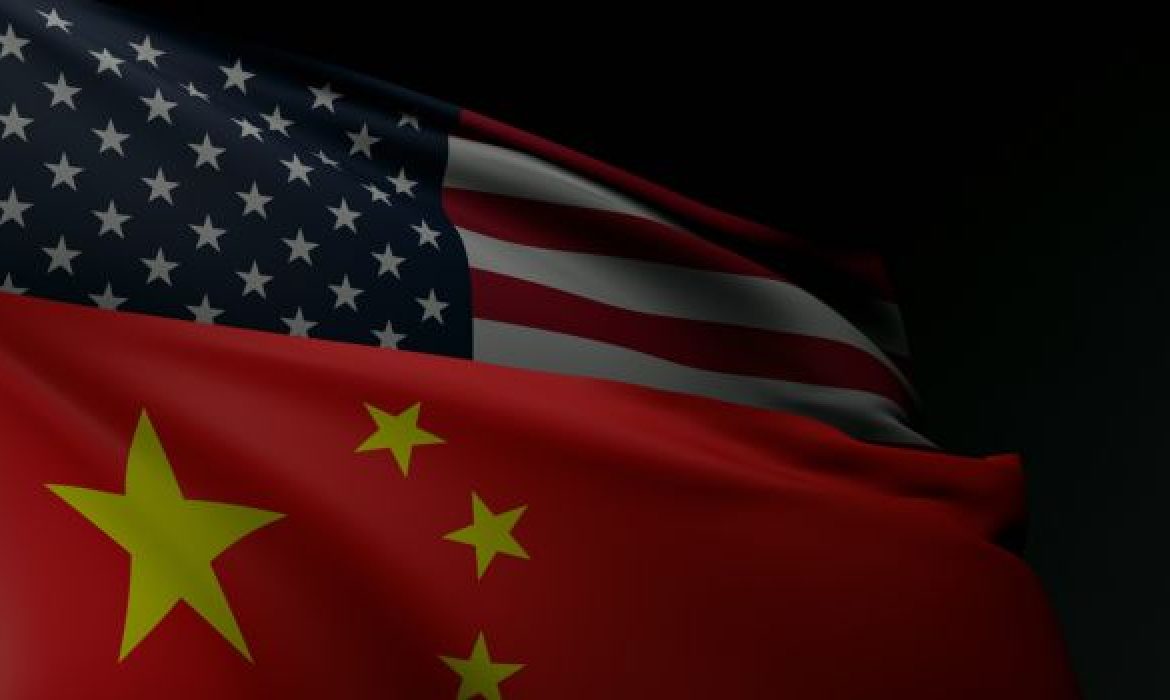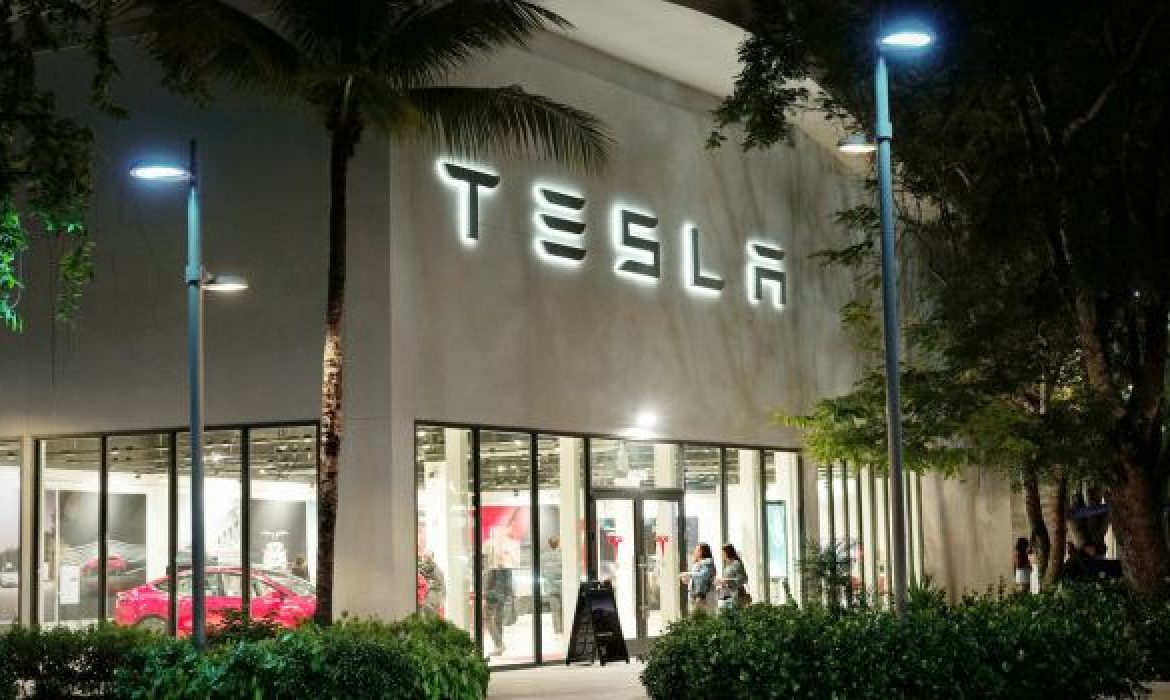Daily Synopsis of the New York market close – October 30, 2025
Date Issued – 30th October 2025
Courtesy of the Research Department at Balfour Capital Group
Key Points
- U.S.–China Trade Truce Lifts Market Sentiment: Trump and Xi reached a one-year agreement pausing rare earth export curbs and cutting U.S. fentanyl-related tariffs to 10%, signaling a thaw in relations that eased global trade tensions.
- Fed Cuts Rates but Cautions on Future Easing: The Federal Reserve lowered rates to 3.75%–4% and announced the end of quantitative tightening, but Chair Powell warned that another cut in December is “not a foregone conclusion,” tempering market optimism.
- Samsung Profit Surges on AI Chip Boom: Samsung’s Q3 operating profit more than doubled to 12.2 trillion won, driven by record memory chip sales for AI servers, as it reclaimed the global memory market lead from SK Hynix.
- Shell Extends Buybacks Amid Strong Results: Shell reported $5.4 billion in Q3 earnings, beating expectations and unveiling another $3.5 billion share buyback, sustaining investor confidence despite softer oil prices.
Trump, Xi Strike One-Year Trade Truce Focused on Rare Earths and Tariffs
The U.S. and China reached a limited one-year agreement on rare earth supplies and fentanyl-related tariffs following a closely watched meeting between Presidents Donald Trump and Xi Jinping in South Korea. Beijing agreed to delay its export controls on rare earth minerals by a year, while Washington halved tariffs on fentanyl-linked Chinese goods to 10%, reducing total duties on Chinese exports to 47%. In exchange, China pledged to curb fentanyl exports and resume U.S. agricultural purchases, including soybeans. Markets reacted positively, with China’s CSI Rare Earths Index rising over 2%, while soybean futures fell 1.6%. Analysts said the deal marks a tactical de-escalation rather than a structural shift, easing immediate tensions but leaving broader issues—like tech restrictions and industrial overcapacity—unresolved.Fed Delivers Second Rate Cut, But Powell Tempers Market Optimism
The Federal Reserve cut interest rates for a second consecutive meeting, lowering the benchmark federal funds rate by 25 basis points to a range of 3.75%–4%, while signaling caution about further easing. Chair Jerome Powell said another reduction in December is “not a foregone conclusion,” prompting traders to scale back expectations for continued rate cuts. The Fed also announced it will end quantitative tightening on December 1, marking a pause in its multi-year balance sheet reduction. Despite elevated inflation at 3% and moderating job growth, Powell emphasized growing concern about labor market softness. U.S. equities reversed early gains after his remarks, reflecting investor unease over a less dovish policy path.Samsung Earnings Surge as AI Chip Demand Fuels Profit Rebound
Samsung Electronics reported a sharp rebound in third-quarter earnings, with operating profit more than doubling to 12.2 trillion won ($8.6 billion) on booming demand for memory chips used in artificial intelligence servers. Revenue rose nearly 9% year-over-year to 86.1 trillion won, beating analyst expectations and signaling a strong recovery in the company’s semiconductor division. Memory chip sales hit a record 33.1 trillion won, propelling Samsung’s Device Solutions unit to a tenfold profit increase from the previous quarter. The company also regained the global memory market lead from SK Hynix after passing Nvidia’s qualification tests for advanced HBM chips. Samsung expects sustained AI-driven data center investments to keep fueling growth into 2026.Shell Beats Profit Estimates, Launches $3.5 Billion Share Buyback
Shell reported stronger-than-expected third-quarter earnings of $5.4 billion, surpassing analyst forecasts and supported by solid operational performance and trading strength. The energy major announced a new $3.5 billion share buyback program over the next three months—its 16th consecutive quarter of repurchases exceeding $3 billion. Although adjusted earnings fell nearly 10% year-on-year, Shell’s results highlighted improved cash flow discipline, with net debt reduced to $41.2 billion. Year-to-date, Shell’s shares have gained over 16%, outperforming peers as investors reward its consistent shareholder returns and resilient performance amid a softer crude price environment.Conclusion
Global markets ended the week on a cautiously optimistic note as easing U.S.–China trade tensions and strong corporate earnings offset lingering monetary uncertainty. The Federal Reserve’s rate cut, coupled with its pause on balance sheet reduction, underscored a measured approach to supporting growth amid elevated inflation risks. Meanwhile, corporate strength from Samsung and Shell reinforced investor confidence in both technology and energy sectors, highlighting divergent but resilient growth drivers. As trade diplomacy stabilizes and earnings momentum continues, investors remain focused on how monetary signals and geopolitical recalibration will shape risk sentiment heading into year-end.Investment Insights
- Trade Easing Boosts Risk Appetite: The U.S.–China tariff rollback reduces short-term volatility across commodities and equities, favoring cyclical sectors such as industrials and semiconductors.
- Monetary Policy Uncertainty Persists: The Fed’s cautious tone signals a potential pause in easing, suggesting investors should maintain balanced exposure between growth and defensive assets.
- AI Infrastructure Drives Tech Momentum: Samsung’s strong AI chip demand confirms continued capital inflows into semiconductor and cloud infrastructure plays, reinforcing the long-term tech investment theme.
- Energy Majors Reward Shareholders: Shell’s consistent buybacks amid moderating oil prices point to sustained cash flow resilience—supporting dividend-focused and income-oriented portfolios.
Economic Calendar
| Date | Event | Why It Matters |
|---|---|---|
| October 31, 2025 | Eurozone Flash HICP (Inflation) | Key read on price pressures shaping ECB policy path and euro-area rate expectations. |
| October 31, 2025 | China NBS Manufacturing & Services PMIs | First-look at China’s growth momentum and global demand pulse amid structural challenges. |
| October 31, 2025 | U.S. CPI (September, delayed release) | Inflation snapshot crucial for Fed policy outlook and risk-asset positioning, especially under data uncertainty. |
| October 30, 2025 | U.S.–China Bilateral Meeting (Trump–Xi, APEC) | Potential trade détente affects tariffs, supply chains, rare-earth access and global risk sentiment. |
| November 1, 2025 | Deadline for U.S. 100% Tariffs on Chinese Goods | A consummation or delay of tariff action will have significant implications for manufacturing, global trade and investor confidence. |
Disclaimer: This newsletter provides financial insights for informational purposes only. It does not constitute financial advice or recommendations for investment decisions.
Daily Synopsis of the New York market close – October 29, 2025
Date Issued – 29th October 2025
Courtesy of the Research Department at Balfour Capital Group
Key Points
- Fed Liquidity Watch: Strains in short-term lending point to tighter cash conditions, increasing the chance the Fed pauses its balance-sheet reductions to stabilize funding.
- Australia Inflation Re-Accelerates: Q3 prices rose 3.2% year over year, topping forecasts and likely delaying any rate cuts as the central bank prioritizes stubborn housing and services costs.
- Nvidia Expands in the U.S.: The company’s most advanced AI chips are now being produced in Arizona, strengthening domestic supply while policy limits on China remain a key risk.
- U.S.–China Tech Dialogue: Trump’s plan to discuss Nvidia chips with Xi raises the prospect of limited export allowances to China—supportive for sales but potentially narrowing the U.S. tech edge.
Front-End Strain Puts QT on the Line
Short-term funding pressure has pushed repo rates toward the Standing Repo Facility (SRF) ceiling, with persistent facility usage, reserves dipping below $3 trillion, and heavy T-bill issuance tightening liquidity.
Analysts increasingly frame an early end to quantitative tightening (QT) as a form of risk management, even as some argue that the true driver is not reserve scarcity but an oversupply of collateral.
Australia: Hotter CPI Delays RBA Easing
Australia’s Q3 Consumer Price Index (CPI) accelerated to 3.2% year-over-year, with the trimmed mean rising to 3.0%, moving inflation back above the central bank’s target range and stalling previous signs of disinflation.
Markets responded with tighter financial conditions—Australian equities (ASX) moved lower and the AUD strengthened. Rate-cut expectations were pushed out, with the base case now favoring the Reserve Bank of Australia (RBA) holding its cash rate at 3.6% through year-end.
Stubborn services and housing inflation remain key concerns, limiting support for longer-duration assets despite steady economic growth.
Nvidia Onshores Blackwell; Policy Pitch Intensifies
Nvidia has shifted production of its advanced Blackwell GPUs to Arizona, bolstering U.S. semiconductor supply resilience amid rising demand. Management has flagged a multi-hundred-billion-dollar opportunity in GPU sales.
The company also acquired a $1 billion stake in Nokia and is pushing into 5G/6G platforms, diversifying its end markets. However, U.S. export restrictions continue to pose headline risks, limiting China-related revenue.
While capital expenditure tailwinds are supportive, policy uncertainty and potential margin effects from onshoring remain important factors for investors to monitor.
Xi–Trump Talk Puts NVDA Export Path Back in Play
Former President Trump indicated that Blackwell chip exports may be on the table in his upcoming discussion with Chinese President Xi Jinping, potentially allowing downgraded models (H20/B30A-class) to be exported to China.
China’s current import ban has left Nvidia “100% out of China,” so any export carve-out could aid China’s AI development while marginally narrowing the U.S. technological lead in compute power.
Nvidia’s datacenter visibility will depend on licensing scope, performance limits, and enforcement of export policies.
Conclusion
Liquidity stress in short-term funding markets, re-accelerating Australian inflation, and U.S. semiconductor policy are key themes shaping today’s cross-asset landscape.
Markets are adjusting to potential changes in QT timing and RBA policy while parsing the implications of inflation, growth dynamics, and FX movements.
In equities, resilience in the AI supply chain helps offset policy risks. In rates, issuance calendars and facility usage influence front-end pricing. In FX, AUD strength signals continued policy vigilance.
Geopolitical developments—especially in semiconductor trade—remain a major driver of risk sentiment and sector performance.
Investment Insights
- Liquidity & Policy: Front-end funding stress argues for maintaining ample cash buffers and flexible duration; treat QT timing as a macro volatility source rather than a directional rates call.
- Inflation Path: Re-acceleration risk (Australia) supports a “higher-for-longer” baseline; emphasize pricing power and services exposure over pure rate sensitivity.
- Tech Supply Chain: U.S. onshoring and export controls reshape semiconductor value chains; favor diversified beneficiaries (foundry equipment, advanced packaging, data-center power/cooling) over single-policy outcomes.
- Geopolitics & Compute Gap: Any partial reopening of China chip access narrows the U.S. compute advantage at the margin; balance AI upside with policy dispersion through broader infrastructure plays (cloud, connectivity) and regional diversification.
Economic Calendar
| Date | Event | Why It Matters |
|---|---|---|
| October 29, 2025 | Federal Reserve Rate Decision | Markets expect a 25 bp cut amid cooling labor data; outcome will steer credit conditions, bond yields, and equity valuations. |
| October 30, 2025 | Trump–Xi Meeting (APEC, South Korea) | Potential reset in U.S.–China trade tensions with implications for tariffs, rare-earth supply chains, and global growth sentiment. |
| October 31, 2025 | U.S. Personal Income & Spending / Employment Cost Index | Monitors household demand and wage pressures—both critical for the Fed’s inflation outlook and for consumer-sensitive sectors. |
| November 1, 2025 | Deadline for U.S. 100% Tariffs on Chinese Goods | Could trigger a major escalation in the trade war; delay or reversal would relieve pressure on global supply chains and manufacturing equities. |
Disclaimer: This newsletter provides financial insights for informational purposes only. It does not constitute financial advice or recommendations for investment decisions.
Daily Synopsis of the New York market close – October 28, 2025
Date Issued – 28th October 2025
Courtesy of the Research Department at Balfour Capital Group
Key Points
- Saudi Arabia Accelerates Post-Oil Transition: The kingdom is channeling resources into AI, tourism, and sports, with over half its economy now decoupled from oil revenues as it targets sustainable, diversified growth.
- Google and NextEra Revive Nuclear Power for AI: The companies will restart Iowa’s Duane Arnold nuclear plant by 2029 to meet surging AI-driven electricity demand, underscoring a broader tech shift toward reliable, carbon-free energy.
- Tech Megacaps to Dictate Market Direction: Earnings from Apple, Amazon, Alphabet, Meta, and Microsoft this week will determine near-term equity momentum, with investors watching cloud, AI, and consumer trends for guidance.
- Gold Retreats on Trade Optimism: Bullion fell over 2% to $3,900 per ounce as easing U.S.-China trade tensions reduced safe-haven demand, while markets awaited the Fed’s rate decision for signals on monetary policy trajectory.
Saudi Arabia Accelerates Economic Diversification with Bold Bet on AI
Saudi Arabia is intensifying its drive to reduce oil dependency by investing heavily in artificial intelligence, tourism, and sports. Investment Minister Khalid Al Falih said that more than half of the kingdom’s economy is now “completely decoupled” from oil, with 40% of government revenue stemming from non-oil sources.
Despite a 24% decline in oil revenue in the first half of 2025, Saudi Arabia continues to expand its Public Investment Fund (PIF), now nearing $1 trillion in capital, and plans to become a major AI hub through large-scale data centers and infrastructure development.
The tourism sector—now 5% of GDP—is projected to reach 10% by 2030 as the kingdom opens new resorts, airlines, and airports to attract international visitors.
Big Tech Turns to Nuclear to Feed AI Power Demands
Google and NextEra Energy plan to restart Iowa’s Duane Arnold nuclear plant by 2029, positioning nuclear power as critical infrastructure for the AI era.
The 615-megawatt facility, shuttered in 2020, would provide Google with round-the-clock carbon-free electricity for its expanding cloud and AI data centers while supplying excess power to Iowa’s grid.
U.S. electricity demand hit a record in 2024 as AI buildout accelerated, prompting tech firms to lock in long-duration, low-carbon baseload rather than rely solely on renewables.
Similar nuclear partnerships from Microsoft and Oracle suggest a structural shift: AI capacity growth is increasingly tied to energy security, not just compute scale.
Tech Giants’ Earnings Poised to Set Market Tone for Q4
Jim Cramer emphasized that this week’s earnings reports from Apple, Amazon, Alphabet, Meta, and Microsoft will determine the market’s direction for the remainder of the year.
Together with peers Nvidia and Tesla, these megacaps now make up nearly 35% of the S&P 500’s weighting, meaning any collective weakness could stall the broader rally.
Cramer highlighted expectations for strong cloud performance from Google and Microsoft, ad momentum from Meta, and robust iPhone 17 and AWS updates from Apple and Amazon.
With investors increasingly linking AI adoption to profitability, results across these firms will serve as a key sentiment gauge for U.S. equities heading into year-end.
Gold Slides as Trade Optimism Dims Safe-Haven Demand
Gold prices dropped more than 2% to a three-week low, slipping to around $3,900 per ounce, as optimism surrounding U.S.-China trade talks reduced safe-haven demand and boosted risk assets.
President Trump’s upbeat comments on a potential trade deal and several new economic agreements in Asia spurred equity markets, weighing on bullion’s appeal.
Investors are now focused on the Federal Reserve’s policy meeting, where another rate cut is widely anticipated.
Despite gold’s 53% year-to-date rally and record highs earlier in October, analysts from Citi and Capital Economics have trimmed short-term price forecasts, signaling expectations of further normalization if geopolitical risk recedes.
Conclusion
Global markets are entering a pivotal week shaped by shifting trade dynamics, corporate earnings, and energy transitions.
Progress in U.S.-China trade negotiations and Saudi Arabia’s accelerating diversification away from oil signal structural changes in global growth drivers.
Meanwhile, Google’s nuclear partnership underscores how AI’s energy demands are redefining industrial strategy.
Investors are closely watching mega-cap tech earnings, which could determine short-term market direction, while gold’s retreat highlights easing risk aversion.
With central banks poised to maintain accommodative policies, the focus now turns to how fiscal and corporate decisions align with the next phase of global economic recalibration.
Investment Insights
- Energy Transition Opportunities: Saudi Arabia’s accelerated diversification and Google’s nuclear revival signal long-term investment potential in clean energy infrastructure, AI data ecosystems, and industrial modernization.
- Earnings as Market Catalyst: Short-term equity performance will hinge on the results and guidance from tech giants. Strong cloud and AI revenues could reinforce growth sentiment; weak margins may trigger a correction.
- Commodities Repricing: Gold’s retreat amid easing trade tensions suggests investors are rotating back toward risk assets — a reminder to rebalance between defensive and growth exposures.
- Macro Watchpoints: Progress in U.S.-China negotiations and the Fed’s upcoming rate decision remain critical for positioning in equities, currencies, and commodities.
Economic Calendar
| Date | Event | Why It Matters |
|---|---|---|
| October 29, 2025 | Federal Reserve Rate Decision | Markets expect a 25 bp cut amid cooling labor data; outcome will steer credit conditions, bond yields, and equity valuations. |
| October 30, 2025 | Trump–Xi Meeting (APEC, South Korea) | Potential reset in U.S.–China trade tensions with implications for tariffs, rare-earth supply chains, and global growth sentiment. |
| October 31, 2025 | U.S. Personal Income & Spending / Employment Cost Index | Monitors household demand and wage pressures—both critical for the Fed’s inflation outlook and for consumer-sensitive sectors. |
| November 1, 2025 | Deadline for U.S. 100% Tariffs on Chinese Goods | Could trigger a major escalation in the trade war; delay or reversal would relieve pressure on global supply chains and manufacturing equities. |
Disclaimer: This newsletter provides financial insights for informational purposes only. It does not constitute financial advice or recommendations for investment decisions.
Daily Synopsis of the Asia market close – October 27, 2025
Date Issued – 27th October 2025
Courtesy of the Research Department at Balfour Capital Group
Key Points
- U.S.–China Near Trade Truce: Washington and Beijing outlined a framework pausing new U.S. tariffs and delaying China’s rare earth export curbs, signaling renewed cooperation ahead of the Trump–Xi meeting.
- Nikkei Tops 50,000: Japan’s Nikkei 225 hit a historic high as optimism over U.S.–China trade progress, Wall Street gains, and Fed rate-cut expectations boosted Asian equities.
- India’s Energy Shift: Reliance Industries’ move to halt Russian oil imports under U.S. sanctions could tighten refining margins but strengthen India’s prospects for a new U.S. trade deal.
- China’s Profit Rebound: Industrial profits surged 21.6% in September — the strongest in nearly two years — driven by high-tech manufacturing gains and Beijing’s efforts to curb price competition.
U.S.–China Near Trade Truce Extension as Trump–Xi Prepare to Meet
U.S. and Chinese negotiators outlined a preliminary framework to pause new tariffs and delay Beijing’s rare earth export restrictions ahead of the Trump–Xi meeting scheduled for Oct. 30 at the APEC Summit in South Korea. U.S. Treasury Secretary Scott Bessent said the deal would avert Trump’s threatened 100% tariffs and likely extend the current tariff truce beyond Nov. 10, while China considers a one-year delay in its licensing regime on critical minerals. The framework also includes revived Chinese purchases of U.S. soybeans and a pending TikTok ownership deal, signaling a tentative de-escalation in trade tensions after months of retaliatory measures.Nikkei Breaks 50,000 as Asia Rallies on U.S.–China Trade Progress
Japan’s Nikkei 225 surged 2.46% to close at a record 50,512.32, crossing the 50,000 milestone for the first time as optimism over U.S.–China trade negotiations lifted sentiment across Asia. The rally was reinforced by expectations that President Trump’s proposed 100% tariffs on Chinese imports are “effectively off the table,” according to U.S. Treasury Secretary Scott Bessent. Gains extended to South Korea’s Kospi, which breached 4,000, and Hong Kong’s Hang Seng Index, up 1.05%. Investor confidence also drew strength from Wall Street’s record close and expectations of a Fed rate cut, as Japan prepares for Trump’s upcoming meeting with Prime Minister Sanae Takaichi.Reliance’s Shift from Russian Crude Could Reshape India’s Energy and Trade Balance
Reliance Industries, India’s largest private oil refiner, is reportedly halting purchases of Russian crude following fresh U.S. sanctions on Rosneft and Lukoil, which together supply over 600,000 barrels per day to the company. The move could trim Reliance’s refining margins given Russian oil’s $5–6 per barrel discount to Middle Eastern grades, though alternative supplies from West Asia, Brazil, and Guyana remain available. Analysts say the financial hit will be limited, with the Russian crude benefit representing about 2% of Reliance’s projected 2027 EBITDA. The decision, shared by other Indian refiners, strengthens prospects for a U.S.–India trade deal and reduces Washington’s tariff pressure on New Delhi.China’s Industrial Profits See Strongest Growth Since 2023 Amid Policy Support
China’s industrial profits surged 21.6% year-on-year in September — the fastest pace since November 2023 — as government efforts to curb price wars and stabilize manufacturing margins took effect. The gains extended August’s 20.4% rise and lifted year-to-date profit growth to 3.2%, up from 0.9% in the first eight months. High-tech manufacturing led the rebound with a 26.8% profit increase, offsetting a 29.3% decline in mining. Despite soft consumer prices and ongoing U.S. trade frictions, industrial output grew 6.5% in September, suggesting Beijing’s targeted industrial policies are bolstering profitability even as broader economic momentum remains uneven.Conclusion
Global markets enter the week buoyed by signs of de-escalation between the U.S. and China, driving optimism across equities and commodities. Japan’s record-breaking Nikkei underscores renewed investor confidence in Asia, while India’s energy realignment and China’s sharp profit rebound suggest shifting trade and industrial dynamics. Yet, behind the optimism lies a cautious recalibration — from policy coordination to supply chain resilience — as investors weigh the implications of upcoming U.S.–China talks and potential rate moves by the Federal Reserve. The balance between diplomatic progress and macroeconomic headwinds will define market sentiment heading into November.Investment Insights
- Trade Thaw Boosts Risk Appetite: The U.S.–China tariff pause and rare earth deal framework may lift near-term sentiment in global equities, particularly in export-driven Asian markets.
- Japan’s Momentum Play: The Nikkei’s record rally reinforces Japan’s appeal as a cyclical growth and currency-hedge play amid easing inflation and structural reforms.
- Energy Market Repricing: India’s pivot away from Russian crude could tighten regional supply, supporting oil prices and improving U.S.–India trade alignment — favoring select energy exporters.
- China’s Industrial Strength: Surging industrial profits highlight resilience in high-tech manufacturing, suggesting potential opportunities in Chinese automation, materials, and industrial supply chains.
Economic Calendar
| Date | Event | Why It Matters |
|---|---|---|
| October 29, 2025 | Federal Reserve Rate Decision | Markets expect a 25 bp cut amid cooling labor data; outcome will steer credit conditions, bond yields, and equity valuations. |
| October 30, 2025 | Trump–Xi Meeting (APEC, South Korea) | Potential reset in U.S.–China trade tensions with implications for tariffs, rare-earth supply chains, and global growth sentiment. |
| October 31, 2025 | U.S. Personal Income & Spending / Employment Cost Index | Monitors household demand and wage pressures—both critical for the Fed’s inflation outlook and for consumer-sensitive sectors. |
| November 1, 2025 | Deadline for U.S. 100% Tariffs on Chinese Goods | Could trigger a major escalation in the trade war; delay or reversal would relieve pressure on global supply chains and manufacturing equities. |
Disclaimer: This newsletter provides financial insights for informational purposes only. It does not constitute financial advice or recommendations for investment decisions.
Daily Synopsis of the New York market close – October 24, 2025
Date Issued – 24th October 2025
Courtesy of the Research Department at Balfour Capital Group
Key Points
- Trump-Xi Summit Set for Oct. 30: The upcoming Trump-Xi meeting at the APEC Summit aims to de-escalate trade tensions as both sides face looming tariff deadlines and stalled negotiations.
- China’s Five-Year Plan Prioritizes Consumption and Tech: Beijing reaffirmed a 5% GDP target while emphasizing domestic demand and high-tech self-reliance, signaling continued investment-driven growth despite weak consumer confidence.
- Oil Prices Hold Gains Amid Russian Sanctions: Crude benchmarks stabilized near $66 Brent as U.S. sanctions on Rosneft and Lukoil sparked supply concerns and positioned oil for its strongest weekly advance since June.
- Trump Ends Trade Talks with Canada: The U.S. halted negotiations after a disputed Canadian ad featuring Ronald Reagan’s remarks on tariffs, escalating tensions and adding uncertainty to North American trade relations.
Trump and Xi Set for High-Stakes Meeting as Trade Tensions Simmer
U.S. President Donald Trump will meet Chinese President Xi Jinping next week at the APEC Summit in South Korea, marking their first in-person engagement since 2019 and a potential inflection point in strained U.S.-China relations.
The meeting comes ahead of the Nov. 10 expiration of the current trade truce and Trump’s Nov. 1 deadline for new 100% tariffs, heightening market sensitivity to any signs of progress.
Analysts expect the talks to focus on rare earths, tech exports, and agricultural trade, with both sides signaling cautious intent to de-escalate while preserving leverage ahead of broader structural negotiations.
China Prioritizes Domestic Consumption and Tech Independence in Five-Year Plan
China’s leadership concluded the Fourth Plenum with a renewed focus on boosting domestic consumption and accelerating technological self-reliance, signaling a shift in policy tone as growth pressures mount.
While reaffirming a 5% GDP target for 2025, Beijing emphasized investment-led consumption in sectors like urban infrastructure, public services, and elder care rather than direct stimulus.
The plan also calls for a “significant leap” in technological strength by 2035, underscoring advanced manufacturing, AI, and quantum research as national priorities.
Analysts noted the continued reliance on state-driven investment over household income growth, reflecting caution amid deflationary risks and global tensions.
Oil Holds Steady After Surge as Sanctions on Russia Stir Supply Fears
Oil prices steadied on Friday following Thursday’s 5% rally, with Brent trading at $66.11 and WTI at $61.95, as traders assessed the impact of new U.S. sanctions on Russia’s Rosneft and Lukoil—companies responsible for over 5% of global crude output.
The measures, aimed at tightening pressure on Moscow, have led Chinese and Indian refiners to suspend or scale back Russian purchases, heightening concerns over near-term supply disruptions.
Despite Kuwait’s assurance that OPEC could raise output if needed, both benchmarks remain on track for a 7% weekly gain, signaling a market shift toward undersupply sentiment.
Trump Halts All Trade Talks with Canada Over “Fake” Reagan Ad Dispute
President Donald Trump abruptly terminated all U.S. trade negotiations with Canada on Thursday, citing a controversial Ontario-funded advertisement that used edited remarks from former President Ronald Reagan criticizing tariffs.
The $75 million campaign, led by Ontario Premier Doug Ford, aimed to air the ad across the U.S. to challenge Trump’s tariff policies.
The Ronald Reagan Presidential Foundation denounced the ad as misleading and unauthorized, prompting Trump to accuse Canada of attempting to influence a Supreme Court case involving U.S. tariffs.
This move marks the second suspension of U.S.-Canada trade talks this year, reigniting bilateral trade tensions.
Conclusion
Global markets closed the week balancing cautious optimism with renewed geopolitical strain.
Hopes for progress in U.S.–China relations, fueled by the upcoming Trump–Xi meeting, contrast with rising trade frictions between Washington and Ottawa.
China’s new five-year roadmap underscores a dual strategy of domestic consumption and technological autonomy, reinforcing its long-term growth ambitions.
Meanwhile, energy markets remain volatile as sanctions on Russian oil majors tighten supply expectations.
Overall, investor sentiment reflects a measured appetite for risk—driven by policy uncertainty, shifting trade dynamics, and the persistent interplay between political maneuvering and macroeconomic stability.
Investment Insights
- Trade Diplomacy Watch: The Trump–Xi meeting could reset market sentiment; investors should monitor tariff outcomes and potential easing in U.S.–China trade restrictions for equity and commodity plays.
- China Allocation Strategy: Beijing’s pivot toward domestic consumption and tech self-reliance favors exposure to sectors like advanced manufacturing, automation, and clean energy over traditional property-linked assets.
- Energy Market Volatility: Sanctions-driven supply risks may support higher oil prices in the near term; energy equities and commodity hedges could benefit from tightening global crude flows.
- North American Trade Risks: The U.S.–Canada fallout reinforces geopolitical headline risk—caution is warranted on cross-border sectors sensitive to tariff policy shifts.
Economic Calendar
| Date | Event | Why It Matters |
|---|---|---|
| October 24, 2025 | U.S. Consumer Price Index (YoY) | Critical inflation read that may shift expectations on future Fed rate cuts. |
| October 29, 2025 | FOMC Interest Rate Decision | Key policy decision that sets the tone for rates and global bond flows. |
| October 31, 2025 | Euro Area Flash Manufacturing PMI (Oct) | Early gauge of euro-zone industrial momentum and ECB policy direction. |
| November 3, 2025 | Japan GDP (Q3, QoQ) | Snapshot of Japan’s growth prospects amid currency and regional spill-over risks. |
Disclaimer: This newsletter provides financial insights for informational purposes only. It does not constitute financial advice or recommendations for investment decisions.
Daily Synopsis of the New York market close – October 23, 2025
Date Issued – 23rdOctober 2025
Courtesy of the Research Department at Balfour Capital Group
Key Points
- U.S. Sanctions on Russia’s Oil Giants: Washington’s new sanctions on Rosneft and Lukoil threaten to disrupt up to half of Russia’s crude exports, forcing China and India to seek alternative suppliers and pushing Brent prices near $65 a barrel.
- Tesla Returns to Growth: Tesla posted 12% revenue growth to $28.1 billion after two weak quarters, driven by record vehicle deliveries and energy storage gains, though profits fell 37% amid surging R&D and AI-related costs.
- Amazon Bets on Robotics Efficiency: Morgan Stanley projects Amazon could save up to $4 billion annually by 2027 as it automates 75% of operations, replacing 600,000 warehouse jobs and boosting long-term profitability.
- Gold’s Volatile Ascent Continues: Gold’s 54% year-to-date surge has entered a speculative phase, with prices near $4,300 per ounce; analysts expect further gains despite short-term volatility tied to equity market shifts and profit-taking.
China and India Brace for Oil Supply Shock as U.S. Tightens Sanctions on Russia
The U.S. Treasury’s new sanctions on Russian oil giants Rosneft and Lukoil mark one of Washington’s most aggressive energy moves since the Ukraine war began, threatening to disrupt the flow of over 2 million barrels per day to China and 1.6 million to India.
The sanctions, which take effect Nov. 21, give buyers a short window to unwind contracts, sending Brent crude up 3.7% to $64.91 a barrel.
Analysts expect both Asian nations to pivot toward OPEC and U.S. suppliers, tightening global supply and pushing prices higher as refiners scramble to secure non-sanctioned crude.
Tesla Rebounds on Revenue Growth, But Earnings Miss Amid Rising Costs
Tesla reported third-quarter revenue of $28.1 billion, up 12% year over year and ahead of estimates, marking a return to growth after two straight quarterly declines.
However, net income dropped 37% to $1.37 billion as operating expenses surged 50%, driven by AI and R&D investments.
Automotive revenue rose 6%, but lower EV prices, fading U.S. tax credits, and weak European sales pressured margins.
Tesla’s energy storage business surged 44%, now accounting for a quarter of total revenue. Shares fell 5% in after-hours trading as investors reacted to muted guidance and continued uncertainty around future production timelines.
Amazon’s Automation Drive Could Unlock $4 Billion in Annual Savings by 2027
Morgan Stanley estimates Amazon’s aggressive shift toward warehouse automation could yield $2–$4 billion in yearly savings by 2027 as the company replaces up to 600,000 human roles with robots and automates 75% of operations.
The bank reiterated its overweight rating and $300 price target, noting that robotic fulfillment centers could cut per-order costs by 20%–40%.
CEO Andy Jassy previously said automation has already lowered fulfillment expenses by 25% at Amazon’s Shreveport facility.
Analysts see robotics-driven efficiencies—alongside AI and AWS growth—as key to restoring margin momentum after the stock’s underperformance this year.
Gold’s Record-Breaking Rally Enters a Volatile New Phase
Gold’s historic 54% year-to-date surge—its strongest since 1979—has entered a new, more volatile stage as speculative FOMO-driven buying replaces steady central bank accumulation.
The metal breached $4,000 per ounce in October before retreating 5%, its sharpest daily drop in five years. Analysts view the correction as healthy, noting strong fundamentals amid Fed rate cuts and ongoing geopolitical tension.
However, rising equity markets and potential margin-call liquidations pose near-term risks.
Despite these headwinds, most forecasts still see gold climbing toward $4,500 in 2026 as investors hedge against inflation, policy uncertainty, and elevated global asset valuations.
Conclusion
Markets are navigating a complex intersection of geopolitics, innovation, and shifting capital flows.
The U.S. sanctions on Russia’s energy giants have tightened global oil dynamics, while Asia’s energy dependency underscores renewed supply risk.
Corporate earnings from Tesla and Amazon reveal the dual edge of technological transformation—pressure on short-term margins but powerful long-term efficiency gains.
Meanwhile, gold’s volatility reflects both investor caution and speculative fervor amid policy uncertainty.
As global markets adjust to new realities in energy, automation, and monetary policy, disciplined portfolio diversification remains critical to balancing opportunity and resilience in the quarters ahead.
Investment Insights
- Energy Repricing Ahead: Sanctions on Russia’s oil majors may tighten global supply, supporting near-term upside in crude prices and reinforcing opportunities in U.S. and Middle Eastern energy producers.
- Tech Margins Under Pressure: Tesla’s results highlight a broader trend — innovation-heavy firms face short-term earnings compression before realizing productivity-driven growth; patient capital could be rewarded.
- Automation as a Profit Catalyst: Amazon’s aggressive robotics rollout signals a structural margin expansion theme across logistics and industrial automation sectors.
- Gold as a Tactical Hedge: Heightened volatility and policy uncertainty sustain the case for strategic gold exposure despite short-term corrections in price momentum.
Economic Calendar
| Date | Event | Why It Matters |
|---|---|---|
| October 24, 2025 | U.S. Consumer Price Index (YoY) | Critical inflation read that may shift expectations on future Fed rate cuts. |
| October 29, 2025 | FOMC Interest Rate Decision | Key policy decision that sets the tone for rates and global bond flows. |
| October 31, 2025 | Euro Area Flash Manufacturing PMI (Oct) | Early gauge of euro-zone industrial momentum and ECB policy direction. |
| November 3, 2025 | Japan GDP (Q3, QoQ) | Snapshot of Japan’s growth prospects amid currency and regional spill-over risks. |
Disclaimer: This newsletter provides financial insights for informational purposes only. It does not constitute financial advice or recommendations for investment decisions.
Daily Synopsis of the New York market close – October 22, 2025
Date Issued – 22nd October 2025
Courtesy of the Research Department at Balfour Capital Group
Key Points
- U.S.–India Trade Breakthrough Nears: Washington may slash tariffs on Indian exports to 15–16% from 50%, while New Delhi is expected to gradually reduce Russian oil imports, signaling a potential reset in global trade alignment.
- Asia-Pacific Stocks Diverge: Japan’s new leadership coincides with a trade rebound, while South Korea’s Kospi notches a record high on sustained investor optimism and strong corporate performance.
- European Equities Extend Gains: Defense shares led the advance as geopolitical tensions persist, though Novo Nordisk slipped amid governance turbulence and the U.K. posted record-high borrowing figures.
- Markets Await U.S. Inflation Data: Investors brace for a key CPI report amid doubts over data reliability due to the government shutdown, with expectations of steady 3.1% inflation and further Fed rate cuts ahead.
India–U.S. Trade Breakthrough Nears as Tariff Cuts and Russian Oil Reductions Take Shape
India and the United States are reportedly nearing a landmark trade deal that could see Washington slash tariffs on Indian exports from 50% to around 15–16%, while New Delhi gradually reduces purchases of Russian oil.
The agreement, expected to be finalized around the ASEAN summit later this month, marks a potential thaw in relations after months of tariff escalations and energy tensions.
The deal may also expand India’s import quota for U.S. non-GMO corn, signaling progress toward the $500 billion bilateral trade target by 2030. Markets view the development as a step toward stabilizing global trade and energy flows.
Asia-Pacific Stocks Mixed as Japan Shifts Leadership and South Korea Extends Record Rally
Asia-Pacific markets traded mixed on Wednesday as investors weighed Japan’s trade rebound and the installation of Prime Minister Sanae Takaichi’s new cabinet.
Japan’s exports rose 4.2% in September, ending a four-month slump, though slightly missing forecasts.
The Nikkei 225 finished flat at 49,307.79, while the Topix advanced 0.52% to a record 3,266.43.
South Korea’s Kospi gained 1.56% to a new high of 3,883.68, driven by strong gains in LG Chem after activist pressure for reforms.
Meanwhile, Australia’s ASX 200 declined 0.71% as rare earth stocks cooled following Tuesday’s surge tied to the U.S.–Australia minerals deal.
European Equities Edge Higher as Defense Stocks Rally and Novo Nordisk Faces Governance Shake-Up
European markets closed modestly higher on Tuesday, extending early-week gains amid renewed strength in defense shares and steady investor sentiment.
The Stoxx 600 rose 0.2%, supported by a 1.1% advance in the Aerospace and Defense index as Switzerland’s Montana Aerospace surged over 10%, offsetting declines in Germany’s Renk.
Novo Nordisk slipped 1.3% after announcing board changes ahead of a November extraordinary meeting.
In the U.K., public borrowing hit a record £20.2 billion for September, aligning with forecasts but underscoring fiscal strain ahead of the Autumn Budget.
The FTSE 100 and DAX gained 0.3% and 0.4%, respectively.
Markets Eye U.S. Inflation Data Amid Rising Doubts Over Data Quality
All eyes are on Friday’s U.S. consumer price index report, but questions about data reliability are mounting as the Bureau of Labor Statistics struggles with staffing cuts and operational challenges from the ongoing government shutdown.
Economists expect annual inflation at 3.1%, with monthly gains of 0.4% for headline CPI and 0.3% for core — steady from August.
Despite skepticism about data integrity, investors anticipate the report will give the Federal Reserve cover to proceed with a quarter-point rate cut next week, followed by another in December, even as uncertainty clouds the policy outlook for 2026.
Conclusion
Global markets continue to balance optimism with caution as key economic and political developments unfold across regions.
The U.S. and India edge closer to a landmark trade deal that could reshape supply chains, while Asia’s markets show resilience led by record gains in South Korea.
In Europe, steady momentum in defense and industrial sectors contrasts with concerns over fiscal discipline in the U.K. Meanwhile, investors await the U.S. inflation report, which will likely shape near-term monetary policy direction.
With uncertainties in data reliability and geopolitical undercurrents persisting, portfolio positioning remains crucial in navigating late-year market volatility.
Investment Insights
- Trade Realignment: The pending U.S.–India trade deal could unlock opportunities in emerging market equities and logistics sectors as global supply chains diversify away from Russia and China.
- Asia Momentum: South Korea’s record-breaking rally and Japan’s leadership transition highlight renewed investor confidence in Asia’s growth potential, particularly in technology and manufacturing.
- Defensive Positioning: Europe’s continued defense-sector strength underscores the long-term investment appeal of military and security-linked industries amid persistent geopolitical risk.
- Macro Sensitivity: With the Fed poised for further rate cuts and inflation data under scrutiny, fixed income and gold remain attractive hedges against policy uncertainty and data volatility.
Economic Calendar
| Date | Event | Why It Matters |
|---|---|---|
| October 24, 2025 | U.S. Consumer Price Index (YoY) | Critical inflation read that may shift expectations on future Fed rate cuts. |
| October 29, 2025 | FOMC Interest Rate Decision | Key policy decision that sets the tone for rates and global bond flows. |
| October 31, 2025 | Euro Area Flash Manufacturing PMI (Oct) | Early gauge of euro-zone industrial momentum and ECB policy direction. |
| November 3, 2025 | Japan GDP (Q3, QoQ) | Snapshot of Japan’s growth prospects amid currency and regional spill-over risks. |
Disclaimer: This newsletter provides financial insights for informational purposes only. It does not constitute financial advice or recommendations for investment decisions.
Daily Synopsis of the New York market close – October 21, 2025
Date Issued – 21th October 2025
Courtesy of the Research Department at Balfour Capital Group
Key Points
- U.S.–Australia Critical Minerals Pact: Shares of Australian rare earth and lithium producers surged after Washington and Canberra signed an $8.5 billion minerals partnership aimed at strengthening non-Chinese supply chains for critical materials.
- European Equities Gain: European markets opened higher, led by continued gains in defense stocks following Thyssenkrupp’s TKMS debut and renewed geopolitical tensions, while investors monitored strong Q3 earnings momentum.
- Gold Eases After Record High: Bullion slipped 0.3% to $4,340 per ounce as investors booked profits following an all-time high, though expectations of further Fed rate cuts kept sentiment broadly supportive.
- Japan Pushes Back on U.S. Demands Over Russian Energy: Tokyo reaffirmed its energy independence, maintaining Russian LNG imports vital to national power security despite U.S. pressure to suspend purchases amid tightening sanctions.
Australia’s Critical Minerals Surge on $8.5 Billion U.S. Deal
Australian rare earth and critical metal producers rallied sharply after Washington and Canberra unveiled an $8.5 billion partnership to strengthen non-Chinese supply chains for strategic materials.
The deal, signed by U.S. President Donald Trump and Australian Prime Minister Anthony Albanese, targets joint investment in rare earths, lithium, and gallium refining projects, including Alcoa’s priority gallium recovery initiative in Western Australia. Shares of Lynas gained 4.7%, Iluka 9%, and Pilbara Minerals 5%, while smaller miners such as VHM and Latrobe Magnesium soared up to 47%.
The agreement underscores U.S. efforts to secure critical minerals for defense, energy, and semiconductor industries amid escalating trade tensions with China.
European Markets Edge Higher as Defense Stocks Extend Gains
European equities opened modestly higher on Tuesday, led by continued strength in defense shares following a surge earlier in the week.
The pan-European Stoxx 600 rose slightly in early trade, supported by gains in the Stoxx Europe Aerospace & Defense index, up 0.2%, with Renk adding 0.8% and Italy’s Leonardo advancing 1.4%.
The upbeat momentum followed the successful market debut of Thyssenkrupp’s warship division TKMS and renewed geopolitical tensions between Washington and Kyiv.
Investors also awaited key third-quarter earnings from L’Oréal and Assa Abloy, while U.K. data showed public borrowing climbed to a record £20.2 billion in September, underscoring fiscal challenges ahead of the Autumn Budget.
Gold Retreats Slightly as Investors Lock in Profits After Record High
Gold prices eased on Tuesday as investors took profits following bullion’s surge to a new all-time high of $4,381 per ounce in the previous session, driven by expectations of further Federal Reserve rate cuts and persistent safe-haven demand.
Spot gold slipped 0.3% to $4,340, while U.S. futures dipped 0.1% to $4,356. Analysts said the pullback reflected short-term profit-taking rather than a reversal of trend, with dips likely to attract new buyers amid dovish Fed expectations.
Markets are pricing in two more quarter-point rate cuts by year-end, while investors await delayed U.S. CPI data for confirmation of inflation’s trajectory.
Japan Resists U.S. Pressure to End Russian Energy Imports
Japan signaled it will prioritize national energy security over U.S. pressure to halt Russian oil and gas purchases, Trade Minister Yoji Muto said Tuesday after talks between U.S. Treasury Secretary Scott Bessent and Finance Minister Katsunobu Kato.
While Tokyo has gradually reduced its reliance on Russian energy since the Ukraine invasion and aligned with G7 sanctions by lowering the oil price cap to $47.60, it maintains a waiver due to the strategic importance of LNG from Sakhalin-2, which supplies 3% of Japan’s electricity.
Analysts view Japan’s stance as balancing geopolitical alignment with Washington against the practical realities of securing stable energy supply.
Conclusion
Global markets reflected a cautious yet resilient tone as geopolitical realignments and sector-specific catalysts shaped sentiment.
The U.S.–Australia minerals pact reinforced efforts to diversify critical supply chains, while Europe’s defense sector continued to attract investor inflows amid rising geopolitical tensions.
In commodities, gold’s minor pullback highlighted ongoing sensitivity to Fed policy expectations, and Japan’s firm stance on Russian energy underscored the tension between energy security and allied diplomacy.
As the week unfolds, investors will closely monitor central bank signals and trade developments, with commodities and defense-linked equities likely to remain in focus amid persistent global uncertainty.
Investment Insights
- Critical Minerals Repositioning: The U.S.–Australia deal signals accelerating Western efforts to localize supply chains, potentially benefiting non-Chinese miners and advanced material refiners across Australia and North America.
- Defense Sector Strength: Continued investor rotation toward defense and aerospace stocks reflects structural rearmament trends in Europe and Asia—momentum likely to persist amid elevated geopolitical risk.
- Gold’s Role Reinforced: Despite short-term profit-taking, sustained Fed easing expectations and geopolitical tensions reaffirm gold’s appeal as a core portfolio hedge.
- Energy Security Dynamics: Japan’s pushback against U.S. demands highlights diverging national energy priorities, suggesting selective opportunities in LNG infrastructure and diversified energy assets.
Economic Calendar
| Date | Event | Why It Matters |
|---|---|---|
| October 24, 2025 | U.S. Consumer Price Index (YoY) | Critical inflation read that may shift expectations on future Fed rate cuts. |
| October 29, 2025 | FOMC Interest Rate Decision | Key policy decision that sets the tone for rates and global bond flows. |
| October 31, 2025 | Euro Area Flash Manufacturing PMI (Oct) | Early gauge of euro-zone industrial momentum and ECB policy direction. |
| November 3, 2025 | Japan GDP (Q3, QoQ) | Snapshot of Japan’s growth prospects amid currency and regional spill-over risks. |
Disclaimer: This newsletter provides financial insights for informational purposes only. It does not constitute financial advice or recommendations for investment decisions.
Daily Synopsis of the Asia market close – October 20, 2025
Date Issued – 20th October 2025
Courtesy of the Research Department at Balfour Capital Group
Key Points
- China’s Growth Slows, Investment Contracts: China’s Q3 GDP rose 4.8%, in line with expectations but marking a year low, as fixed-asset investment fell for the first time since 2020 — a warning sign of deepening real estate and private sector weakness.
- Japan’s Succession Crunch Fuels PE Boom: Aging business owners and high inheritance taxes are driving record private equity dealmaking in Japan, with succession-related sales now accounting for over 65% of buyouts and total PE activity up 30% year-on-year.
- Rare Earth Magnet Exports Drop Sharply: China’s September rare earth magnet exports fell 6.1%, renewing global supply chain fears as tighter export controls signal Beijing’s readiness to use its dominance in critical materials as leverage in trade talks.
- Copper’s Strategic Importance Deepens: Global copper demand is projected to surge 24% over the next decade amid the AI, defense, and clean-energy booms, while U.S.–China tensions expose supply fragility and spur calls for Western smelting reinvestment.
China’s Growth Steadies, but Investment Contraction Signals Structural Strain
China’s economy expanded 4.8% year-on-year in the third quarter, matching expectations but marking its slowest pace in a year as the prolonged real estate slump deepens.
Fixed-asset investment unexpectedly fell 0.5% in the first nine months of 2025 — the first contraction since 2020 — driven by persistent weakness in property spending, which plunged 13.9%.
Industrial production, however, outperformed with 6.5% growth in September, underscoring manufacturing resilience.
Economists warn that the investment decline, particularly in private and real estate sectors, highlights deep structural challenges that could weigh on confidence and future growth momentum despite stable consumption and export activity.
Japan’s Aging Entrepreneurs Drive Private Equity Expansion
Japan’s private equity market is booming as a growing succession crisis grips the country’s family-run businesses. With heirs increasingly unwilling to inherit companies and inheritance taxes as high as 55%, many aging owners are turning to private equity buyers—once considered taboo.
Deal activity has surged over 30% year-on-year to roughly $29 billion, fueled by succession-driven sales and corporate carve-outs.
Global firms like KKR and Bain are gaining acceptance as cultural attitudes shift, while a weak yen and low interest rates enhance deal appeal.
Analysts warn, however, that rapid capital inflows risk repeating Japan’s overheated 2006–07 “weak vintage” cycle.
China’s Rare Earth Magnet Exports Drop, Reviving Supply Chain Anxiety
China’s exports of rare earth magnets fell 6.1% in September from August, rekindling fears that Beijing may once again weaponize its dominance in critical materials used across defense, automotive, and tech industries.
The decline, which came before new export licensing rules took effect, signals tighter scrutiny over outbound shipments amid renewed U.S.–China trade tensions. Exports to the U.S. plunged nearly 29% on the month, while volumes to Vietnam surged 58%, underscoring shifting trade patterns.
Analysts warn that Beijing’s control over rare earth supply chains remains a potent geopolitical lever, heightening Western urgency to diversify critical mineral sourcing.
Trade Tensions Reinforce Copper’s Strategic Role in the AI and Energy Transition
Renewed U.S.–China trade frictions have spotlighted vulnerabilities in copper supply chains, even as global demand is set to soar on the back of AI expansion, defense buildup, and green energy infrastructure.
London Metal Exchange CEO Matt Chamberlain warned that recent supply disruptions and tightening inventories underscore the need for greater supply diversity and smelting reinvestment, particularly in Western economies.
With copper prices showing short-term backwardation and long-term bullish momentum, analysts project a 24% rise in global demand over the next decade — positioning copper as both a strategic asset and potential bottleneck in the global energy transition.
Conclusion
Global markets continue to navigate a complex intersection of slowing growth, shifting trade alliances, and evolving industrial priorities.
China’s weaker investment data underscores structural strains, while Japan’s private equity boom highlights how demographic realities are reshaping corporate ownership.
Renewed U.S.–China tensions over rare earths and metals have amplified concerns about supply security, reinforcing the strategic importance of critical materials like copper in the AI and energy transition.
As economic power centers recalibrate, investors face a landscape defined by both risk and renewal — where diversification, adaptability, and long-term positioning remain the keys to resilience.
Investment Insights
- Diversification is imperative: China’s slowing growth and falling investment signal continued fragility in Asia’s largest economy — investors should diversify exposure across markets less dependent on Chinese demand.
- Private equity opportunity in Japan: Demographic and succession challenges are fueling an unprecedented wave of SME sales, creating long-term value opportunities for private equity and strategic buyers focused on operational transformation.
- Supply chain resilience is a key theme: China’s control over rare earths and export restrictions reinforces the need to hedge geopolitical risks through investments in alternative sourcing and allied economies.
- Commodities enter a strategic phase: Rising copper demand from AI, defense, and energy transition sectors underscores long-term bullish fundamentals for industrial metals and related infrastructure assets.
Economic Calendar
| Date | Event | Why It Matters |
|---|---|---|
| October 24, 2025 | U.S. Consumer Price Index (YoY) | Critical inflation read that may shift expectations on future Fed rate cuts. |
| October 29, 2025 | FOMC Interest Rate Decision | Key policy decision that sets the tone for rates and global bond flows. |
| October 31, 2025 | Euro Area Flash Manufacturing PMI (Oct) | Early gauge of euro-zone industrial momentum and ECB policy direction. |
| November 3, 2025 | Japan GDP (Q3, QoQ) | Snapshot of Japan’s growth prospects amid currency and regional spill-over risks. |
Disclaimer: This newsletter provides financial insights for informational purposes only. It does not constitute financial advice or recommendations for investment decisions.
Daily Synopsis of the New York market close – October 17, 2025
Date Issued – 17th October 2025
Courtesy of the Research Department at Balfour Capital Group
Key Points
- Beijing Pushes Back on U.S. Rare Earth Panic: China accused Washington of exaggerating its rare earth export curbs but signaled openness to talks, as the U.S. prepares 100% tariffs and advances plans to secure domestic supply chains.
- Copper’s Strategic Role Strengthens: The U.S.-China trade dispute underscores copper’s importance in the AI and energy transition era, with analysts warning of a “strategic bottleneck” as global demand surges toward 40% growth by 2035.
- Bank Stocks Slide, Gold Hits Record: Renewed credit stress at U.S. regional lenders sparked a global selloff in financials, driving investors into gold and Treasuries while fueling expectations of further Fed rate cuts.
- Regional Bank Selloff Deepens: Zions, Western Alliance, and Jefferies plunged on credit exposure fears tied to auto-sector bankruptcies, amplifying investor anxiety about hidden risks in the opaque private credit market.
Beijing Pushes Back on U.S. Rare Earth Panic
China accused Washington of fueling “unnecessary panic” over its rare earth export controls but maintained it is open to trade talks ahead of a planned Trump–Xi meeting later this month.
The dispute escalates as the U.S. prepares 100% tariffs on Chinese goods starting Nov. 1, citing Beijing’s bid to dominate critical technology supply chains.
Treasury Secretary Scott Bessent said Washington could expand equity stakes in strategic mineral firms to boost self-sufficiency, underscoring a renewed U.S. industrial policy focus amid intensifying competition for control over essential resources.
Copper’s Strategic Role Strengthens Amid AI Expansion and Trade Frictions
Rising U.S.-China trade tensions are spotlighting vulnerabilities in global copper supply chains as demand surges from artificial intelligence, defense, and clean energy sectors.
London Metal Exchange CEO Matt Chamberlain said the latest trade spat underscores the need for diversified supply and renewed Western investment in smelting capacity, with Europe’s Aurubis in talks to build a U.S. smelter backed by Washington.
Analysts warn copper could become a “strategic bottleneck” of the energy transition, with demand projected to rise 24% by 2035 as the metal’s role in semiconductors, electrification, and AI infrastructure accelerates.
Bank Stocks Slide on U.S. Lender Fears as Gold Surges to Record High
Global equities fell sharply on Friday, led by a selloff in bank stocks after renewed stress among U.S. regional lenders triggered fears of broader credit risk.
Shares of Zions and Western Alliance plunged over 10%, dragging European and Asian financials lower.
Safe-haven assets rallied, with gold reaching a record $4,378 per ounce and Treasury yields hitting three-year lows as investors priced in two additional Fed rate cuts this year.
The dollar weakened against the yen and Swiss franc, while oil extended losses amid easing geopolitical risk and renewed expectations of U.S.-Russia talks on Ukraine.
Regional Bank Selloff Deepens as Credit Fears Spread Across Wall Street
U.S. regional banks extended steep losses Thursday, led by Zions Bancorporation and Western Alliance, after disclosures of bad loans reignited concerns about credit quality in an already fragile sector.
The SPDR S&P Regional Banking ETF fell over 6%, while Jefferies tumbled more than 10% amid exposure to bankrupt auto supplier First Brands, fueling broader unease over private credit transparency.
JPMorgan’s Jamie Dimon warned that “when you see one cockroach, there are probably more,” echoing investor fears of wider contagion.
Analysts noted the risks remain idiosyncratic for now but cautioned that opaque credit markets could magnify systemic stress.
Conclusion
Markets closed the week on edge as renewed U.S.-China trade friction, banking sector weakness, and shifting commodity dynamics converged to heighten volatility.
China’s rare earth controls and Washington’s tariff threats reignited supply chain and inflation concerns, while regional bank losses revived credit stress fears reminiscent of 2023.
Meanwhile, copper’s strategic importance in the AI and clean energy transition underscores the tightening link between geopolitics and industrial demand.
Investors continue rotating toward safe havens — notably gold and Treasuries — as uncertainty deepens, highlighting the need for disciplined positioning and diversification amid a rapidly evolving global macro landscape.
Investment Insights
- Diversify for Geopolitical Risk: Heightened U.S.-China tensions and commodity policy shifts reinforce the value of diversification across sectors and regions to reduce exposure to trade and supply chain disruptions.
- Monitor Banking Sector Stress: Regional lender volatility suggests credit tightening could re-emerge; maintain defensive positioning in financials and focus on institutions with strong balance sheets and limited private credit exposure.
- Capitalize on Commodity Repricing: Copper’s long-term demand trajectory, driven by AI, electrification, and defense spending, presents selective entry points in industrial metals and related infrastructure equities.
- Sustain Safe-Haven Allocation: Gold’s resilience amid uncertainty confirms its strategic role as a portfolio stabilizer, particularly as markets price in further Fed easing.
Economic Calendar
| Date | Event | Why It Matters |
|---|---|---|
| October 15, 2025 | U.S. Retail Sales (MoM) | Gauge of consumer spending trends heading into Q4 and influence on Fed sentiment. |
| October 16, 2025 | FOMC Minutes | Insight into the Fed’s deliberations on rates and balance-sheet strategy. |
| October 17, 2025 | BoJ Interest Rate Decision | Potential pivot for Japan’s yield curve and regional capital flows. |
| October 24, 2025 | U.S. CPI (YoY) | Core inflation read that could strongly influence Fed policy expectations. |
Disclaimer: This newsletter provides financial insights for informational purposes only. It does not constitute financial advice or recommendations for investment decisions.













